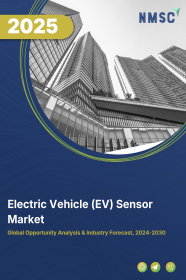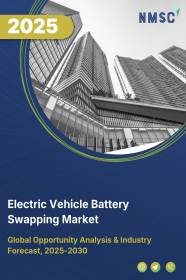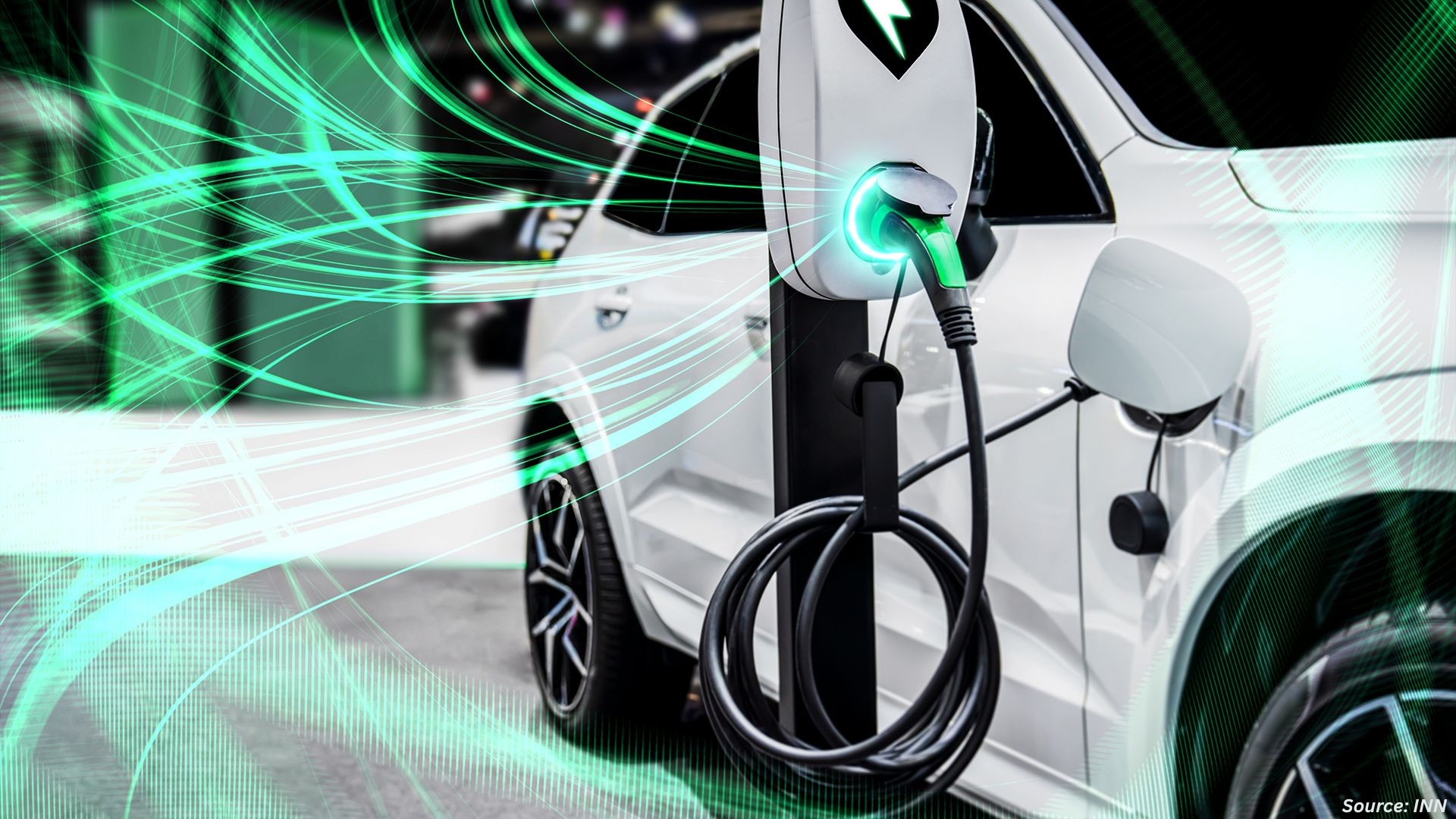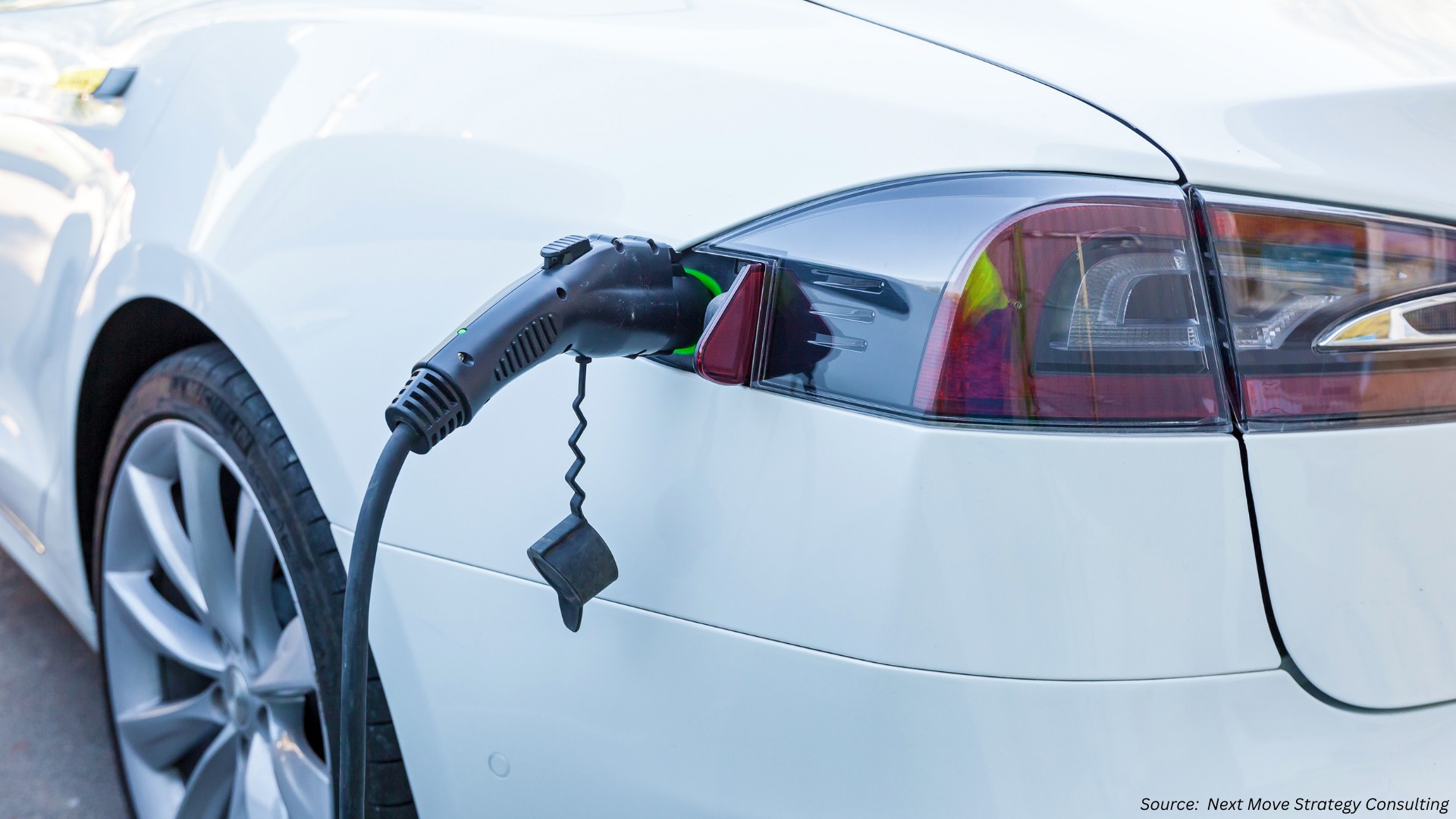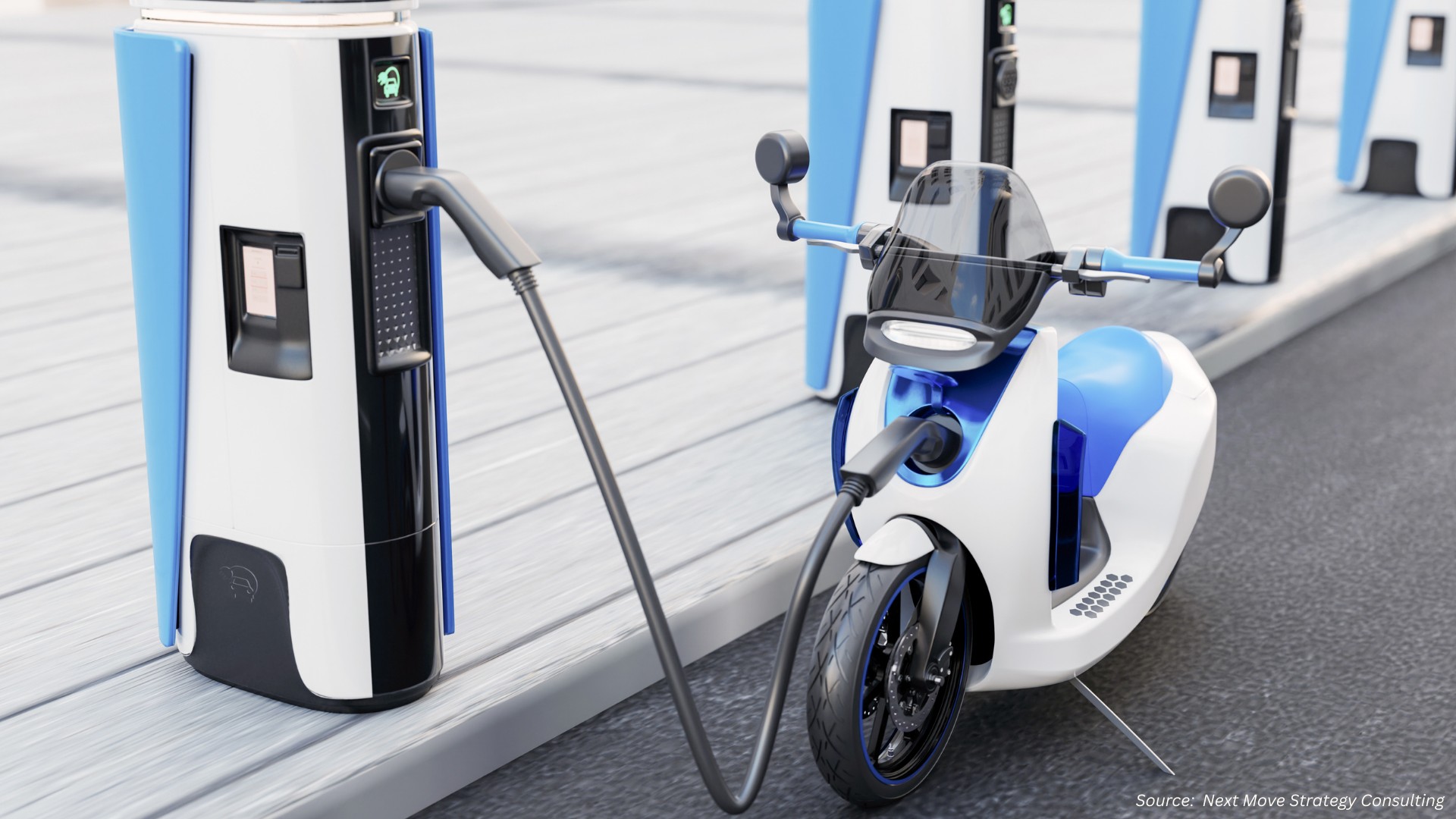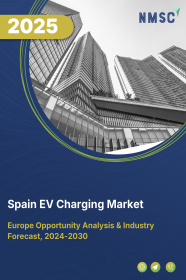
Spain Electric Vehicle (EV) Charging Market by Type Of Charger, (Ac Chargers, Dc Chargers (22 Kw To 350 Kw)), by Charging Speed, (Level 1, Level 2, Level 3), by Connector Type, (Type 1, Type 2, Ccs, Chademo, Others), by Installation, (Fixed, Portable), by End User, (Commercial, Residential)– Opportunity Analysis and Industry Forecast 2023–2030
Industry: Automotive & Transportation | Publish Date: 23-Oct-2025 | No of Pages: 111 | No. of Tables: 142 | No. of Figures: 87 | Format: PDF | Report Code : AT856
Market Definition
Spain Electric Vehicle (EV) Charging Market was valued at USD 167.86 million in 2022, and is predicted to reach USD 1180.9 million by 2030, with a CAGR of 28.3% from 2023 to 2030. Electric vehicle chargers are essential infrastructure for connecting plug-in electric vehicles to electrical outlets, enabling them to charge their batteries. They are categorized based on the rate of energy delivery to the vehicle's battery over time. Charging levels range from level 1 to level 3, with higher levels delivering power more quickly. Advanced charging stations may feature smart meters, cellular connectivity, and network access to enhance functionality.
Electric vehicles, including neighborhood EVs and plug-in hybrids, can be charged at these stations, reducing carbon emissions and mitigating the environmental impact of transportation. Commercial spaces have seen a higher penetration of EV charging infrastructure compared to residential areas. Public charging stations with ultra-fast capabilities are particularly beneficial for long-distance travel. Nevertheless, residential EV chargers hold substantial growth potential due to their affordability and convenience, making them an attractive option for those looking for practical and accessible EV charging solutions.
Government Initiatives Fuel Growth in the Spain EV Charging Station Infrastructure Market
The Spain EV charging station infrastructure market is witnessing strong growth driven by government-led initiatives. Authorities are prioritizing large-scale investments in charging networks to accelerate electric mobility adoption. These initiatives focus on expanding public access points, upgrading grid connectivity, and ensuring nationwide coverage. As a result, Spain is shaping a supportive environment that facilitates the transition to electric vehicles while driving the growth of the charging infrastructure market.
Key Industry Players' Strategic Initiatives Drive Demand in the Spain Ev Charging Market
The Spain EV charging market is shaped by the active involvement of leading companies that are deploying strategies such as partnerships, expansions, and product advancements. These efforts are aimed at strengthening the charging ecosystem, increasing accessibility, and improving user experience. The continuous focus of major players on innovation and infrastructure development is playing a pivotal role in driving demand for EV charging solutions across Spain.
High Initial Setup Costs of Fast Chargers Hinder the Spain Ev Charging Market Growth
Despite rapid progress, the Spain EV charging market faces challenges due to the high upfront costs of installing fast and ultra-fast chargers. While consumers increasingly demand rapid charging solutions that can deliver power in less than 30 minutes, the steep investment requirements act as a barrier. This cost-intensive nature of advanced charging infrastructure could limit wider adoption, slowing the pace of market expansion in Spain.
Surging Adoption of Vehicle-to-grid (V2G) EV Charging Stations in Spain Unlocks Opportunities
The Spain EV charging market is unlocking new opportunities through the adoption of vehicle-to-grid (V2G) technology. V2G enables two-way energy flow, allowing electric vehicles to store and return electricity to the grid. This integration enhances grid stability, creates additional value for EV owners, and positions EVs as active components of the energy ecosystem. While the high installation cost of V2G infrastructure remains a hurdle, its long-term potential to transform the Spain EV charging market is significant, opening doors for advanced connector manufacturers and technology providers.
Competitive Landscape
The Spain Electric Vehicle (EV) Charging industry includes several market players such as Tesla Inc., ChargePoint Holdings Inc., ABB Ltd., Allego B.V., Shell Plc, Efacec Power Solutions, WallBox Inc., Schneider Electric, Siemens, AutoCarga, Teison Energy Technology Co.,Ltd., Blink Charging, , ZiV Automation, Kempower Oyj, TOTAL ENERGIES, and Others.
Key Benefits
-
The Spain Electric Vehicle (EV) Charging market report provides a quantitative analysis of the current market and estimations through 2023-2030 that assists in identifying the prevailing market opportunities to capitalize on.
-
The study comprises a deep dive analysis of the market trend including the current and future trends for depicting the prevalent investment pockets in the market.
-
The information related to key drivers, restraints, and opportunities and their impact on the market is provided in the report.
-
The competitive analysis of the market players along with their market share in the Spain Electric Vehicle (EV) Charging market.
-
The SWOT analysis and Porter’s Five Forces model are elaborated in the study.
-
Value chain analysis in the market study provides a clear picture of the stakeholders’ roles.
Spain Electric Vehicle (EV) Charging Market Key Segments
By Type of Charger
-
AC Chargers
-
Mode 1 (2.3 kW)
-
Mode 2 (2.3 kW)
-
Mode 3 (3.7 kW to 22 kW)
-
-
DC Chargers (22 kW to 350 kW)
By Charging Speed
-
Level 1
-
Level 2
-
Level 3
By Connector Type
-
Type 1
-
Type 2
-
CCS
-
CHAdeMO
-
Others
By Installation
-
Fixed
-
Portable
By End User
-
Commercial
-
Commercial Public EV Charging Stations
-
Highway Charging Stations
-
Fleet Charging Stations
-
Workplace Charging Stations
-
-
Commercial Private EV Charging Stations
-
-
Residential
-
Private Homes
-
Apartments
-
Key Players
-
Kempower
-
Schneider Electric
-
Siemens
-
ABB
-
Ingeteam
-
Leviton Manufacturing Co
-
Tesla
-
delta
-
Hitachi
-
Enphase
-
Circontrol
-
EFACEC POWER SOLUTION
-
V2C
-
14 VEGA Chargers
-
Wallbox
Report Scope and Segmentation
|
Parameters |
Details |
|
Market Size in 2022 |
USD 167.86 Million |
|
Market Volume in 2022 |
13 Thousand Units |
|
Revenue Forecast in 2030 |
USD 1180.9 Million |
|
Growth Rate |
CAGR of 28.3% from 2023 to 2030 |
|
Analysis Period |
2022–2030 |
|
Base Year Considered |
2022 |
|
Forecast Period |
2023–2030 |
|
Market Size Estimation |
Million (USD) |
|
Growth Factors |
|
|
Companies Profiled |
15 |
|
Market Share |
Available for 10 companies |
|
Customization Scope |
Free customization (equivalent up to 80 working hours of analysts) after purchase. Addition or alteration to country, regional, and segment scope. |
|
Pricing and Purchase Options |
Avail customized purchase options to meet your exact research needs. |

















 Speak to Our Analyst
Speak to Our Analyst



